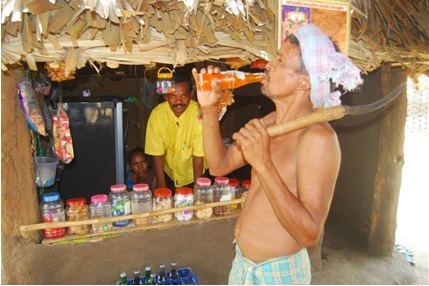Let us now understand the characteristics and classification of rural consumers.
The rural consumers are classified into the following different groups based on their economic status −
The Affluent Group
They are mostly cash rich farmers and are very few in number. They have affordable but do not form a demand base large enough for marketing firms to depend on — wheat farmers of Punjab and rice merchants of Andhra Pradesh fall in this group.
The Middle Class
This is one of the largest segments for manufactured goods and is fast expanding — farmers cultivating sugar cane in UP and Karnataka fall in this category.

The Poor
This constitutes a huge segment. Their Purchasing power is less, but strength is more. They receive the grants in various ways from government and reap the benefits of many such schemes and may move towards the middle class. The farmers of Bihar and Orissa fall under this category.
Changing Profile of Rural Consumers
Rural consumers are mostly dependent on agriculture and were not very literate about products and services available in the market till some time back. This scenario is slowly changing due to an increase in literacy and disposable income.
Long ago, rural consumers went to a nearby city to buy branded products and services. Only selected households used branded goods, be it tea or jeans. Earlier, big companies flocked to rural markets to establish their brands.
Rural markets are these days very critical for every marketer, may be it for a branded shampoo or a television. Earlier marketers thought of van campaigns, cinema commercials and a few wall paintings to entice rural masses under their folds. Today a customer in a rural area is quite literate about branded products that are on offer in the market place, thanks to television and telecommunication media.

Many companies are entering into the rural markets and educating them on newer products, their features and services and also about their maximum utilization. The rural youth today are playing a far more significant role in influencing the purchase decisions.
They frequently travel out of the village and are the drivers of purchase decisions regarding radios, television (black and white as well as color), automobiles and other goods. They may not be the end users but often these are the people who influence the purchase decision of high value products and they also decide on which brands to choose.
The consumption level of consumer durables in the rural sector has risen dramatically over the last two decades or so. Even the rural woman is coming out of the house and also exercising her choice in selecting categories — the choice of brands may still be with the males of the household. The final purchase decisions still rests with the chief male of the family. In other words, the “chief wage earner” still applies in the rural markets.
Influencing the Rural Consumers
The biggest challenge faced by marketers today is to develop a model to influence the rural consumers’ mind over a large period of time and keep it going. This needs to be achieved in a minimum of limited or a reasonable budget. That’s where the marketers who really need to understand rural markets and advertising agencies can make a difference and develop a communication model.

The mass media has the drawback that the time gap between the point of exposure and the time of purchase is long. So it is very difficult and risky to use it in rural communication.
The most important element in rural communications is that the marketer has to integrate the following three things in communication −
● Exposure of a message
● Trial or demonstration
● Final sale
There is minimal brand loyalty in rural consumers. This is mainly due to a bigger problem of brand recognition. There are a lot of looks alike in the rural market. The challenge is to create communication that would help the rural consumer in recognizing brands, logos, visuals, colors, etc., so that he or she actually buys the actual brand and not something else.



Comments are closed